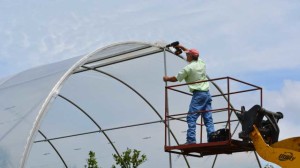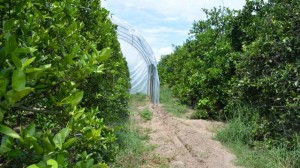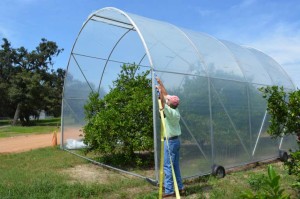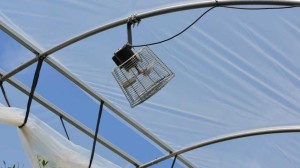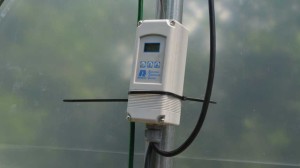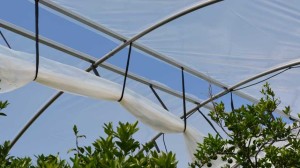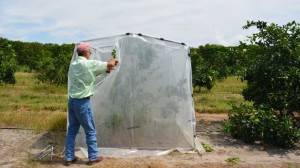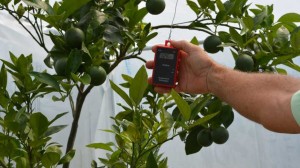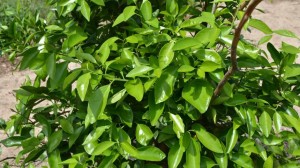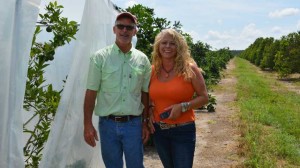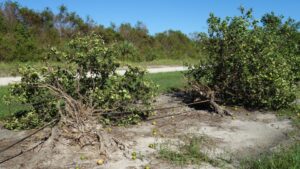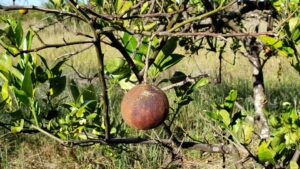Florida Citrus Grower Keeps His Cool In The Heat Of HLB
[blackoutgallery id=”64844″]
About 15 years ago, Rex Clonts got out of the vegetable growing business after many years to “retire to the easy life” of a citrus grower. But, the onslaught of HLB has turned the easy life on its ear and requires management more akin to row crops these days.
Years as a vegetable grower taught Clonts mechanical skills, which he hopes will serve him well trying to grow citrus in the presence of HLB. He is putting those skills to work to create a viable and systematic approach to utilize thermotherapy for treating HLB-infected trees in his grove — literally heating HLB-infected trees up to 130°F.
Dr. Yongping Duan, a researcher at Ft. Pierce’s USDA Horticultural Lab, is among those studying thermotherapy as a means of killing the HLB bacteria in citrus trees.
“I went down to visit Dr. Duan to learn about his research and then went back to my experience in making machinery that we used to grow and harvest vegetables,” says Clonts. “There are growers out there trying heat therapy, but nobody is trying to design a system that can be used industry wide on all-sized trees.”
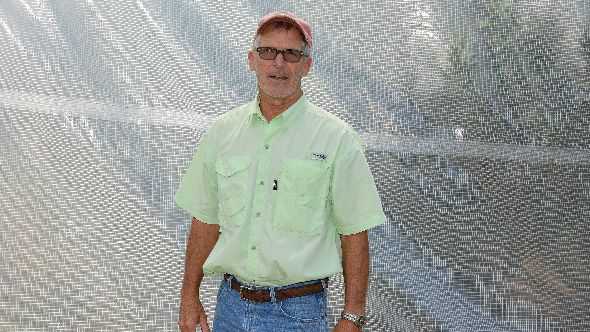
Rex Clonts Photo by Frank Giles
Clonts says his goal is to build a system capable of treating 100 of his acres per summer with a crew of no more than four people. The setup would include a string of tent structures capable of treating an eighth of a mile (600 to 650 feet depending on grove layout). In Clonts’ grove, that would take 26 modules covering 52 trees.
“If this is ever going to be adopted by the industry, it must be simple and systematic,” says Clonts. “It needs to be predictable enough that when the four-man crew shows up in the morning, they know exactly what their duties are for the day and can go perform them efficiently. And, everything I am using to build these tents is commercially available materials sold for greenhouse production.
“Using this very systematic approach, you would operate enough of these units to treat a third of your acres per year. The theory is the heat treatments provide positive benefits to the tree for two to three years. If you are treating a third of your acres per year, by the fourth year, you would be starting back over as the benefits begin to wear off.”
Another key to the system is the ability to treat large trees, which require much larger tents than what many growers have seen in action to date with smaller trees. Clonts has built two prototypes and a third is planned, which will be slightly smaller and easier to manage. Clonts gable-cut tops his trees at 12 to 14 feet, so the tents must be sized large enough to accommodate the height.
Time And Temperature
Clonts began actively treating his grove in June. The goal is to capture solar energy in the tents and maintain temperatures at 105°F to 130°F, which research shows will kill the HLB bacteria.
“Right now our rule of thumb is we keep the structure over the trees for three days, seeking 10 hours per day of temperatures more than 105°F,” says Clonts. “One of the big things we’ve learned is the heating is very different over these mature trees than if you just put the tent out over a grass field.”
The canopy and moist soil surface have a moderating effect on the temperatures inside the tent, making air circulation critical to the process. Clonts fixed this challenge by installing circulating fans in the tops of the tents to move air.
“In these big structures, if you don’t move the air with the fans, you are going to only heat the top of the tree and possibly damage it, and the bottom canopy is never going to get heated,” he says. “We are finding that one fan per tree in the structure takes care of this problem.”
To ensure temperatures are monitored correctly, three standard digital thermometers are placed inside the tent at two feet, six feet, and 12 feet in the canopy. When temperatures get too hot, a thermostat in the structure engages an automatic venting system.
“The automatic venting system is counter-intuitive because we have a motor that keeps the vents sealed until we hit the critical temperature of 130°F,” Clonts says. “When it hits the temperature, the motor shuts off and the vents open. We do this because we want the tents to self-vent if we lose power. When the temperature drops back to 125°F, the motor starts back up and closes the vent.”
Making Moves
Imagining 52 tents strung together over a row of mature citrus is almost like envisioning a giant Slinky in a grove. It would be nice if those tents moved as gracefully as the childhood toy. Clonts says efficiently moving the structures is a critical part of the equation in creating a systematic approach to thermotherapy in groves.
“Digging V-ditches down the center of rows is a key component of moving the strings of modules,” Clonts says. “We learned two things quickly moving these. First, if you plow the V-ditch and it rains, it can be compromised for the next day. Second, we have to pull these structures from the two front corners, which requires two tractors. It is very difficult to match the tractor speeds, and if one gets a foot ahead of the other, the structure starts riding up out of the V-ditch and it can twist the frames.”
Clonts is turning to his mechanical tinkering skills to address both issues by building a custom machine that will hook on the back of one tractor. It will have a unit that will dig the V-ditches on the go for the length of the move. It also will have a winch that will attach to the front corners of the tent to pull the units much more evenly.
Another important consideration in linking the modules is constructing the tents with flexible connection joints to deal with uneven terrain.
Heating Economics
So how much will all this cost? Clonts says a lot variables come into play to impact the cost factor, so it will take some time to establish reliable expense figures.
“We can’t accurately estimate costs until we explore all the efficiencies we can gain streamlining the system, but my hope is we can heat treat somewhere between $700 to $1,000 per acre,” Clonts says. “That would be a lot if you are spending it on a two-year-old tree. But, if you take a grove like mine that has historically yielded 500 to 750 boxes per acre, the math is different.
“In the past two years, my yields have dropped to less than half the historical range, so if I can pick back up another 100 boxes per acre with heat treatment at today’s prices, that would more than cover the cost of thermotherapy. I believe 100 boxes is extremely doable. If we can pick up 200 boxes per acre more yield, now we really have something. Again, the returns with thermotherapy make more economic sense with mature trees.”
Clonts adds that thermotherapy is not replacing any of the other intensive management practices now being employed to mitigate HLB in his grove. He will continue psyllid control, enhanced nutrition, treating bicarbonates in irrigation water, etc., in daily operations.
Oh, Happy Day
Clonts says he would have never dreamed he would be putting tents over his citrus trees to combat HLB just a year ago.
“Even six months ago, everybody I talked to said there is no way you can heat treat an entire grove, but I’ve decided that’s not good enough,” he says. “I have no illusions that thermotherapy is going to restore my grove to its pre-HLB health. What I am shooting for is to immediately restore enough profitability in these trees to hold out until something better comes along.
“No matter how successful this thermotherapy system turns out, it will be a happy day when I can scrap it because it will mean a more permanent solution to HLB has been found.”















